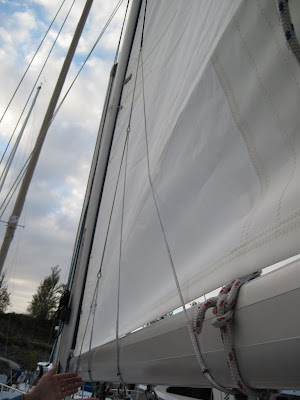DSC can be used to initiate ship-to-ship calls and distress signals. For the distress signal to work, the ship's Maritime Mobile Service Identity (MMSI) number must be programmed into the radio. A Maritime Mobile Service Identity (MMSI) is a series of nine digits which are sent in digital form over a radio frequency channel in order to uniquely identify a ship. Preferably, the radio is also connected to the GPS, so when the "Distress" button is pressed, the preformatted distress message will include information about the ship, as well as the position and time of the distress signal.
Non federal MMSIs are assigned by the Federal Communications Commision (FCC). For ships that do not intend to sail to foreign ports, the FCC has agreed to let BoatUS issue MMSIs. For boats that intend to travel to foreign ports, the MMSI number can be obtained through the FCC as part of the application for ships station license. A ship station license as well as an operator permit are required if you intend to sail to foreign ports and use your radio. A station license or operator permit are not required if you are sailing in international waters, only if you intend to visit foregn ports.
Global Maritime Distress and Safety System (GMDSS)
http://en.wikipedia.org/wiki/Global_Maritime_Distress_Safety_System
Digital Selective Calling (DSC)
http://en.wikipedia.org/wiki/Digital_Selective_Calling
Maritime Mobile Service Identity (MMSI)
http://en.wikipedia.org/wiki/Maritime_Mobile_Service_Identity
MMSI through BoatUS
http://www.boatus.com/MMSI/
MMSI through FCC
http://wireless.fcc.gov/uls/index.htm


















































